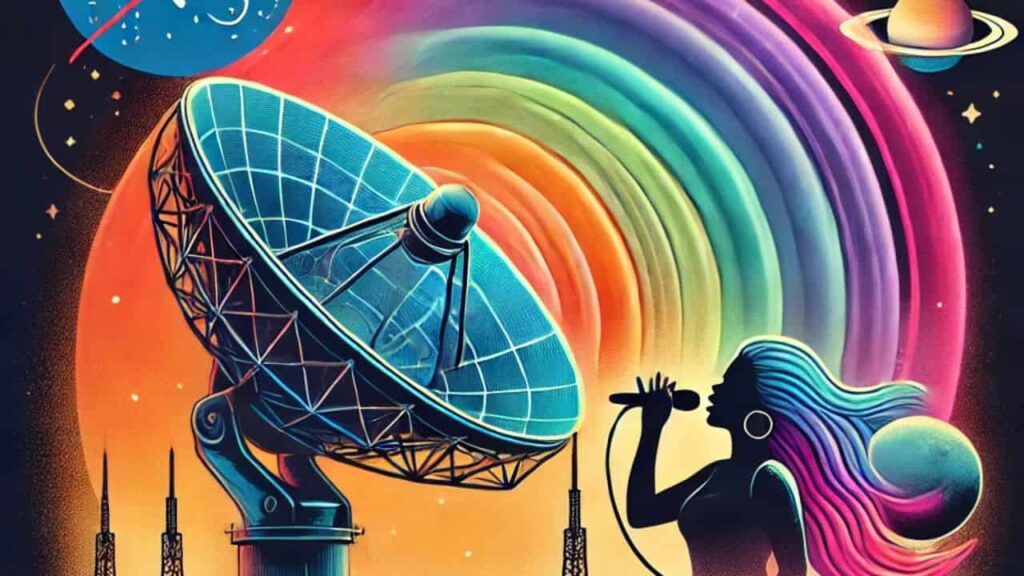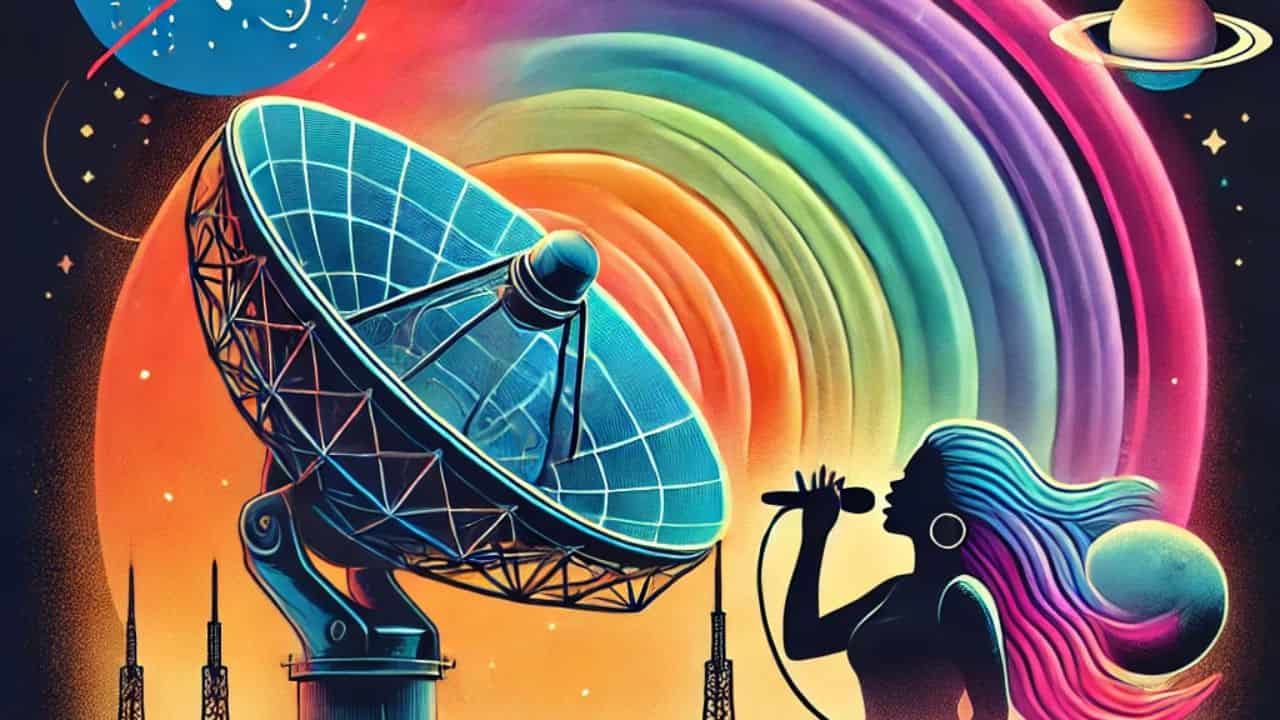NASA Missy Elliott, hip-hop, deep space network, DSN, Venus, space exploration, The Rain Supa Dupa Fly, Jet Propulsion Laboratory, JPL, Brittany Brown, DAVINCI mission, VERITAS mission
NASA and hip-hop artist Missy Elliott have made history by transmitting the song “The Rain (Supa Dupa Fly)” to Venus. Discover the groundbreaking collaboration between NASA’s Deep Space Network and the iconic artist, the significance of this achievement, and the future of Venus exploration missions.

NASA Transmits Hip-Hop Song to Deep Space for the First Time
The intersection of music and space exploration reached a new milestone as NASA transmitted a hip-hop song into deep space for the first time. On Friday, July 12, 2024, the Jet Propulsion Laboratory (JPL) in Southern California sent an inspirational message and lyrics from Missy Elliott’s song “The Rain (Supa Dupa Fly)” to Venus via NASA’s Deep Space Network (DSN). This event marks a historic moment for both the music and space communities.
The Deep Space Network: A Gateway to the Stars
NASA’s Deep Space Network, part of the Space Communications and Navigation (SCaN) program, is a global network of giant radio antennas that support interplanetary spacecraft missions. It is the largest and most sensitive telecommunications system in the world, allowing NASA to track, send commands, and receive scientific data from spacecraft exploring the Moon and beyond. The DSN operates from three complexes located approximately 120 degrees apart in Goldstone, California; Madrid, Spain; and Canberra, Australia. This global positioning ensures constant communication with spacecraft as the Earth rotates.
A Collaboration of Cosmic Proportions
Brittany Brown, Director of the Digital and Technology Division at NASA Headquarters, initially proposed the idea of collaborating with Missy Elliott. Brown highlighted the synergy between space exploration and Elliott’s art, noting how both push boundaries. Elliott’s music often features space-centric storytelling and futuristic visuals, making this collaboration a fitting tribute to her innovative spirit.
“Missy has a track record of infusing space-centric storytelling and futuristic visuals in her music videos, so the opportunity to collaborate on something out of this world is truly fitting,” said Brown.
The Journey to Venus
The transmission was made by the 34-meter (112-foot) wide Deep Space Station 13 (DSS-13) radio dish antenna at the Goldstone Deep Space Communications Complex near Barstow, California. This antenna, coincidentally nicknamed Venus, transmitted the song across approximately 158 million miles (254 million kilometers) to the planet Venus. Traveling at the speed of light, the radio frequency signal took nearly 14 minutes to reach its destination.
Missy Elliott’s Milestone
Missy Elliott, a pioneer in the hip-hop industry with a career spanning over 30 years, expressed her excitement and disbelief at this achievement. “I still can’t believe I’m going out of this world with NASA through the Deep Space Network when ‘The Rain (Supa Dupa Fly)’ becomes the first ever hip-hop song to transmit to space!,” Elliott exclaimed. She chose Venus as the destination because it symbolizes strength, beauty, and empowerment, themes that resonate deeply with her music and message.
“I am so humbled to have the opportunity to share my art and my message with the universe!” she added.
NASA’s Future Venus Missions
The transmission of Elliott’s song to Venus is a prelude to NASA’s upcoming missions to the planet. Two significant missions, DAVINCI and VERITAS, were selected in 2021 to explore Venus and send data back to Earth using the DSN. DAVINCI (Deep Atmosphere Venus Investigation of Noble gases, Chemistry, and Imaging), managed by NASA’s Goddard Space Flight Center, is set to launch no earlier than 2029. This mission aims to study Venus’s atmosphere and understand its climatic history.
VERITAS (Venus Emissivity, Radio Science, InSAR, Topography, and Spectroscopy), scheduled for launch no earlier than 2031, will map Venus’s surface in high detail to uncover its geological history and understand why it developed so differently from Earth. Managed by NASA’s Jet Propulsion Laboratory, VERITAS will use advanced radar and imaging technology to achieve its objectives.
Additionally, NASA and the DSN are collaborating with the European Space Agency on the EnVision mission. A team at JPL is developing the Venus Synthetic Aperture Radar (VenSAR) for EnVision, which will further our understanding of Venus’s surface and subsurface features.
The Deep Space Network’s Legacy
In continuous operation since 1963, the DSN has been a cornerstone of NASA’s space exploration efforts. Managed by JPL, the DSN plays a crucial role in mission success, enabling continuous communication with spacecraft even as they travel billions of miles from Earth. Its three ground stations — strategically located in Goldstone, Madrid, and Canberra — ensure that no matter where a spacecraft is in its orbit, it remains in contact with mission control.
The Cultural Impact of the Transmission
The transmission of “The Rain (Supa Dupa Fly)” to Venus is more than just a technical feat; it’s a cultural milestone. It symbolizes the merging of human creativity and technological prowess, demonstrating how art and science can come together to achieve something truly extraordinary. This event not only honors Missy Elliott’s contribution to music and culture but also highlights NASA’s commitment to engaging the public through innovative and inspiring initiatives.
Conclusion
NASA’s decision to transmit Missy Elliott’s “The Rain (Supa Dupa Fly)” to Venus represents a unique blend of art and science, showcasing the limitless possibilities of human creativity and technological advancement. As we continue to explore the cosmos, such collaborations remind us of the importance of pushing boundaries, whether in music or space exploration. This historic event sets a precedent for future collaborations between artists and scientists, encouraging us to dream bigger and reach further than ever before.
Read More
- NASA Issues Alert: Gigantic Asteroid 2024 NF to Pass Near Earth at 73,000 KMPH
- ChatGPT future versions to replace many human tasks: Top AI Scientist
- TOP 5 Best TCL TVs in 2023
- Joe Engle: NASA Astronaut and US Air Force Pilot Who Made History










